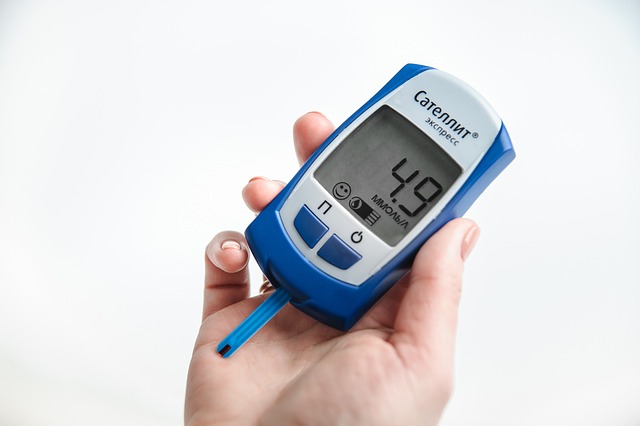The world has gone digital. Are you keeping up? Disease Management Programs are not the next big thing in healthcare. Disease Management Programs are the current big thing in healthcare! If your organization is not using them, you are risking sicker members or employees, and higher healthcare costs, and decreased productivity.
“Enrolling the chronically ill in disease-management programs that ensure they get appropriate care has the most potential to reduce insurance premiums. For example, a program that preempts 25 unnecessary emergency department visits can easily save $50,000, while preventing four inpatient stays can save at least $100,000. Savings like these are not unrealistic for a 2,000-employee company.”
– Harvard Business Review
What Are Disease Management Programs?
Disease Management Programs are treatments that are offered through devices such as phones, sensors, apps, and computers. Programs are often based online or are delivered through text messages. They are intended to help patients change their behaviors, often through strategies such as cognitive behavioral therapy (CBT), so that they can successfully implement care plans for their chronic health or mental health conditions.
Many types of devices and health program delivery systems can be considered part of disease management. These are some examples.
- Digital health coaches that use artificial intelligence (AI) to provide customized coaching.
- Blood pressure and glucose monitors, scales, and other wearable connected devices that send measurements directly to a computer or other database.
- Simple push notifications, such as to remind obese patients to be aware of food choices or to remind heart disease patients to take medications.
- Smartphone apps for logging food, activity, sleep, or other behaviors with the goal of improving health outcomes.
Disease Management Programs can complement traditional treatment. For example, an implanted sensor might transmit a patient’s data regarding medication use and effectiveness to a healthcare provider’s laptop. The provider can then provide advice on adherence or usage to improve outcomes.
Disease Management Programs might also provide alternative strategies to traditional healthcare in order to prevent or manage chronic diseases or mental health conditions. For example, users with anxiety or depression might enroll in a multi-week smartphone-based program to assist with healthy responses to triggers, as a supplement to medications or in-person therapy.
Disease Management Programs vs. Wellness
Disease Management Programs aim to change users’ behaviors to improve health. They might support weight loss, better food choices, increased physical activity, and stress management. How, then, are disease management programs any different than wellness tools such as wellness apps and wearables?
The difference is that while wellness apps are intended to promote general health, disease management programs are for managing specific chronic conditions. Wellness apps and wearables, for example, might make vague claims about what they can help you do, such as increase energy, lose weight, get fit, or sleep better. Wearables such as fitness trackers can count steps and monitor heart rate with the intention of increasing your activity or raising awareness of stress, for example.
Disease management programs are also geared towards behavior change, but they are designed to prevent or manage specific physical or mental health conditions. Consider these examples.
- A continuous glucose monitoring (CGM) device that automatically sends values to healthcare providers, who can note alarming values or unhealthy trends and work with patients to identify and change behaviors that caused them.
- The use of message-based social media platforms that allow providers to monitor patients’ mood and therefore assist in depression treatment.
- A smartphone app for hypertension that reminds patients to take blood pressure and medications, and provides education on healthy eating to lower blood pressure.
Evidence-Based Strategies
To be effective, disease management programs should be based on proven behavioral change theories. An example is cognitive behavioral therapy (CBT), which helps patients develop in-the-moment positive thoughts when they have challenges.[1] Through CBT, a patient with anxiety might learn to breathe deeply to prevent a panic attack. An obese patient who is in a weight loss program might apply CBT as she develops a habit of reminding herself that she is worth eating healthily when she is confronted with tempting brownies.
Disease management programs can use evidence-based solutions in additional ways. For example, Lark AI health coach is based on the Centers for Disease Control and Prevention (CDC) Diabetes Prevention Program (DPP) curriculum, which has been shown to lower type 2 diabetes risk by over 50%.[2] The health coach, which is delivered via smartphone app, also incorporates CBT and evidence-based coaching on blood sugar-lowering behaviors including weight loss, physical activity, and sleep.
Careful design of disease management programs can pay off, as this health coach has been shown to help users lose weight,[3] which is an important component of diabetes prevention. Each kilogram of weight loss in an obese individual with prediabetes is linked to a 16% reduction in type 2 diabetes risk.[4]
The Need for Disease Management Programs: Chronic Disease Burden
Chronic and mental health conditions cost a lot. They account for 86 cents out of every dollar spent on healthcare in the U.S. That is $2.3 trillion each year before even mentioning costs of lost productivity from absenteeism, presenteeism, and early mortality.[5]
About 2 out of 5 Americans have at least 1 chronic disease, 1 out of 3 have at least 2, and 3 out of 4 older adults have multiple conditions.[6] That includes about 150 million Americans with at least one chronic condition that affects daily activities. Chronic conditions that are relatively common and quite expensive include:
- Obesity
- Diabetes
- High blood pressure (hypertension)
- Heart disease
- Alzheimer’s disease
- Depression
- Arthritis
- Anxiety
- Sleep disorders
The Potential for Disease Management Programs: Patient Behavior Change
Besides being expensive and troublesome, these and other burdensome conditions have something else in common: they depend greatly on patient behaviors. Daily choices that patients make can determine or largely affect whether these conditions develop and how they progress. Patients choose what to eat, how much activity to get, how well they follow their doctors’ instructions for taking medications, which medical appointments to make and attend, and how carefully they monitor outcomes such as blood pressure or anxiety levels.
What if there were evidence-based, proven interventions to cause patients to adopt these and similar healthy behaviors? That is, in fact, the very definition of disease management programs! Consider the potential of automated reminders to take medications and make medical appointments, instant feedback on user-input meal choices, and suggestions for when to get in a workout or get ready for bed.
These seemingly simple choices are not easy for patients to make on their own (if they were, weight loss would not be challenging!). Nor are they adequately facilitated by healthcare professionals (do you know a lot of people whose nurse reminds them to take their medications each day?). Digital therapeutics are designed to increase the healthy behaviors that can improve health so dramatically.
Benefits of Disease Management Programs: Better Health (And Lower Costs)
Any amount of disease prevention or improved management lower costs, and disease management programs can be designed to improve some of the most important behaviors that affect patients’ health:
- Self-monitoring of values such as blood sugar in diabetes or blood pressure in hypertension.
- Medication adherence in conditions ranging from depression and schizophrenia to hypertension and high cholesterol.
- Weight loss and physical activity in prediabetes, diabetes, hypertension, obesity, Alzheimer’s disease, and arthritis.
One source estimates that, “Over 80% of U.S. healthcare spending is strongly rooted in unhealthy behaviors and poor drug compliance!”[7]
Preventive and management behaviors are known to be cost-effective. The DPP is estimated to show positive return on investment within 3 years on average, while preventing a case of diabetes can save over $7,000 per year.
Benefits of Digital Disease Management Programs and A.I: Scalability
It is one thing to offer a temporary, on-site workplace wellness or member health promotion program to a select few employees or health plan members. It is quite another to offer the program on an ongoing basis to all who might benefit from it and expand it to include new participants as your business grows.
Some disease management programs offer infinite scalability quickly and at cost when you consider a fully automated smartphone app for chronic conditions such as prediabetes, diabetes, or hypertension. As you expand your program to include more participants, there is no need to pay proportional additional costs. You do not need to rent or use more meeting or classroom spaces, pay for more overhead costs, or hire extra health coaches, leaders, or educators.
Each participant can still receive:
- The same high quality of coaching that incorporates the expertise of multiple health authorities.
- A customized program with personalized coaching due to innovative AI.
- Instant responses 24/7 without you needing to pay for more nurses to operate the phone lines.
Scaling up can happen quickly and without headaches if you select your provider of digital therapeutics program(s) carefully. Consider the benefits of an AI nurse that comes with:
- An enrollment team to get you started by identifying members/employees, verifying eligibility, and enrolling new patients.
- Seamless delivery to each patient’s door and easy setup of a connected device, such as a body scale, glucometer, or blood pressure meter.
- A dedicated customer support team to keep things running smoothly.
Benefits of Disease Management Programs: Widespread Access
If we know how to prevent and better manage these conditions, why are we not doing better for the millions of Americans with them? Lack of access to healthcare is a major barrier to proper – adequate, high-quality – care. Only a fraction of those who could benefit get the care they need. Access is limited because of reasons such as:
- A shortage of doctors and other healthcare professionals, making appointments expensive and hard to get.
- Only a small reach of preventive programs compared to treatment for more advance conditions.
- Trouble accessing care because of distance (such as in rural areas) or time (such as needing to take time off work).
- Tendency for poorer-quality care to be available in less privileged areas.
Disease management programs can narrow, and eventually close, these gaps. Using AI or other automated response mechanisms helps overcome shortfalls in healthcare provider availability. Remote treatment, such as health coaching via smartphone apps, reporting mood via a website, or automatically sending blood sugar measures to doctors’ computers let patients get care regardless of where they live or what their schedules are.
Benefits of Digital Disease Management Programs: Big Data
Are medications effective? Which lifestyle choices have the most impact on which conditions? Are certain demographics more responsive than others to certain treatments, behaviors, or strategies?
Research is traditionally expensive and limited. A single clinical trial can easily cost millions of dollars and leave many questions unanswered as it investigates only one specific question. Disease management programs give free reign to imagine what continuously collected, low-cost data could do to revolutionize healthcare.
Drug companies could find out minute-to-minute information about their medications’ metabolism, effects on target markers, and potential interactions with other medications, foods, or substances. Providers could learn more about specific effects on mood, blood pressure, heart rate, or even hormones, of patient behaviors ranging from deep breathing to lifting weights. This data can all be made available for analysis and distribution for only a tiny bit of the cost of traditional data collection.
Benefits of Disease Management Programs: Patient Perspective
Disease management programs can lower costs for providers and employers and improve research in healthcare. Can they help the healthcare system’s most important people, the patients? It certainly seems that way. They have the potential to:
- Reduce time and energy spent on their medical conditions by avoiding unnecessary trips to the doctor and long waiting times.
- Aid patients in carrying out care plans so their management is less burdensome and so that they are more confident and feel better about reporting to their doctors.
- Improve health and quality of life.
The Future Is Here
Disease management programs may be the healthcare strategy of the future, but the future is here. You are losing ground if you are not already using digital therapeutics for your members or employees to improve health, prevent chronic diseases, and/or mitigate the ones they already have. You can get started today and learn more.











.webp)







.png)